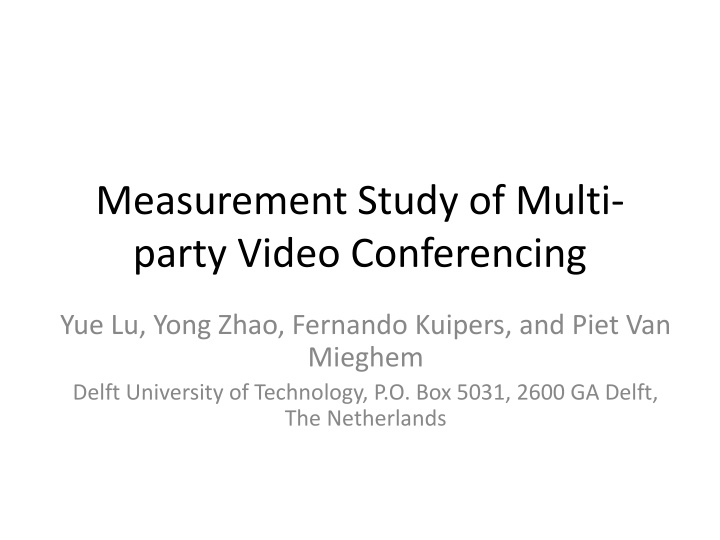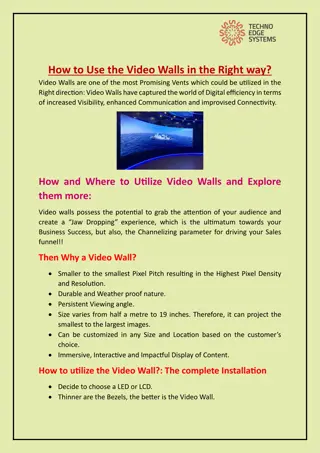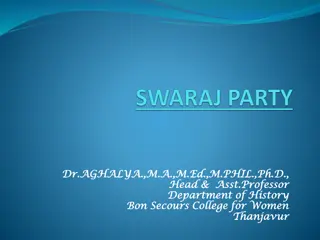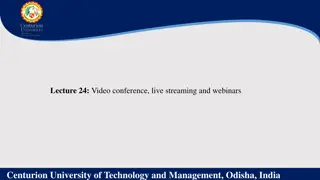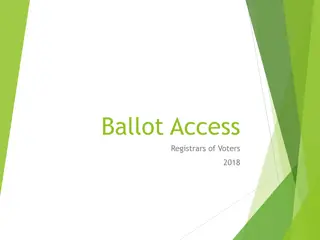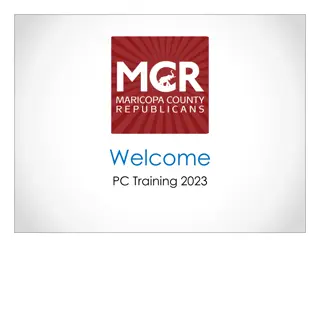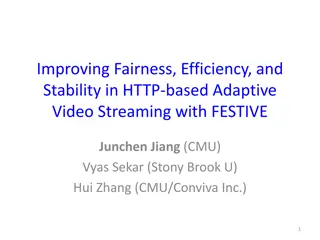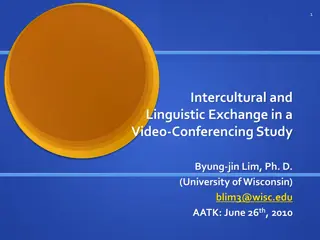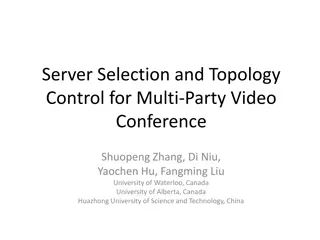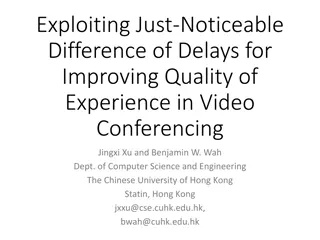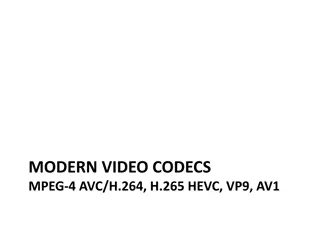Study of Multi-party Video Conferencing: Performance Analysis & Quality Assessment
Investigating mechanisms, system performance, & quality of free multi-party video conferencing apps. Explore study objectives, experimental setup, measurement results, worst-case scenario analysis & conclusions. Focus on Internet-based multi-party video conferencing applications, survey insights, experimental methods, & applications used for monitoring & data collection.
Download Presentation

Please find below an Image/Link to download the presentation.
The content on the website is provided AS IS for your information and personal use only. It may not be sold, licensed, or shared on other websites without obtaining consent from the author.If you encounter any issues during the download, it is possible that the publisher has removed the file from their server.
You are allowed to download the files provided on this website for personal or commercial use, subject to the condition that they are used lawfully. All files are the property of their respective owners.
The content on the website is provided AS IS for your information and personal use only. It may not be sold, licensed, or shared on other websites without obtaining consent from the author.
E N D
Presentation Transcript
Measurement Study of Multi- party Video Conferencing Yue Lu, Yong Zhao, Fernando Kuipers, and Piet Van Mieghem Delft University of Technology, P.O. Box 5031, 2600 GA Delft, The Netherlands
Agenda Introduction Survey Experiment Set-Up Measurement Result Worst-case Study Summary and conclusion
Introduction Investigating the mechanisms, analyzing the system performance, and measuring the quality of free multi-party video conferencing applications are important objectives for researchers, developers, and users.
Aim to do This paper focus on study free applucations that provided multi-party (>2 users) video conferencing (VC) on the Internet. The questions:
Set-Up Mebeam web-browser based S/C with a single server center. Qnext (version 4.0.0.46) centralized P2P. The node which hosts the meeting is the super node. Vsee (version 9.0.0.612) decentralized full-mesh P2P. Nefsis (free trial version) S/C, network of distributed computers as servers.
Experiment Two type of experiments local lab experiments Composed of standard personal computers participating in a local video conference. global experiments learn more about the network topology, traffic load and quality of experience(QoE), when a more realistic international video conference is carried out.
Experiment (cont.) To retrieve results, they used the following applications at each participant: Jperf to monitor the end-to-end available bandwidth during the whole process of each experiment. e2eSoftVcam to stream a stored video via a virtual camera at each VC participant.
Experiment (cont.) Camtasia Studio 6. Because all applications use an embedded media player to display the Webcamera streaming content, we have to use a screen recorder to capture the streaming content. Wireshark to collect the total traffic at each participant.
Measurement result Login and call establishment process Mebeam uses TCP to transfer the signals, and RTMP to transfer video and audio data. Qnext uses TCP for signaling and UDP for video communication among participants.
Measurement result (cont.) Login and call establishment process Vsee The communication among users is usually of the P2P type using UDP, with automatic tunneling through a relay if a direct connection is not available. Nefsis uses TCP for signaling and delivering streaming data.
Average traffic load (cont.) Observations The traffic does not necessarily increase as more users join the conference. Hence, we believe that in order to support more simultaneous conference participants, the overall traffic has to be controlled.
Quality of Experience (QoE) Video Quality In the objective measurements, we use bVQM (Batch Video Quality Metric) to analyze the VC s video quality off-line. bVQM takes the original video and the received video and produces quality scores that reflect the predicted fidelity of the impaired video with reference to its undistorted counterpart. The bVQM score scales from 0 to approximately 1. The smaller the score, the better the video quality.
Quality of Experience (QoE) average Mean Opinion Score (MOS) 5=excellent, 4=good, 3=fair, 2 = poor, 1 = bad.
Quality of Experience (QoE) Audio-Video Synchronization Interactivity (communication delay) Large communication delay implies lack of real- time interactivity in our global multi-party VC experiments.
Worst-case study The four free multi-party VC application all cannot provide good quality in unstable Internet connections.
Conclusion It seems that the Server-to-Client architecture with many servers located all over the world is currently the best architecture for providing video conferencing via the Internet, because it introduces the least congestion at both servers and clients.
